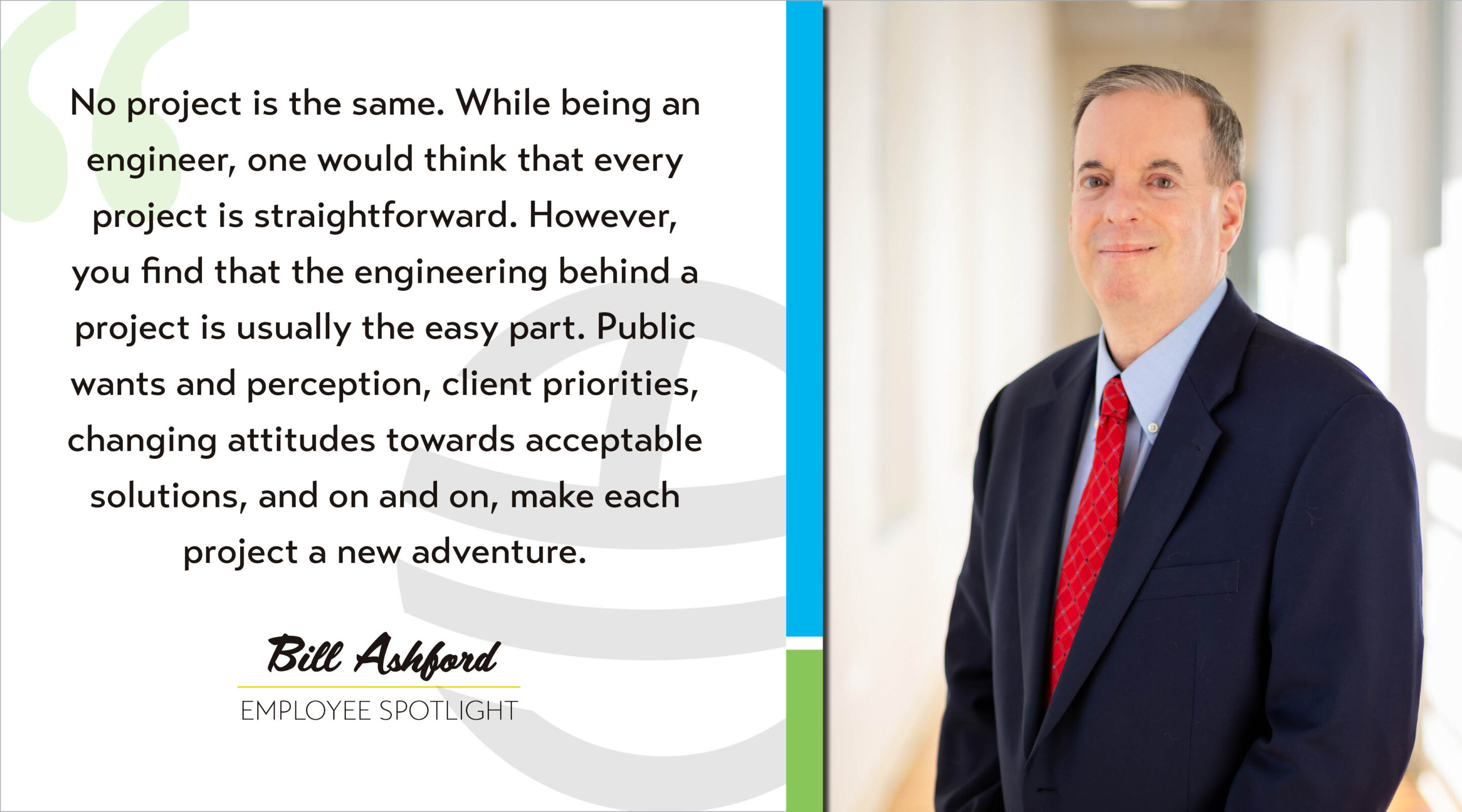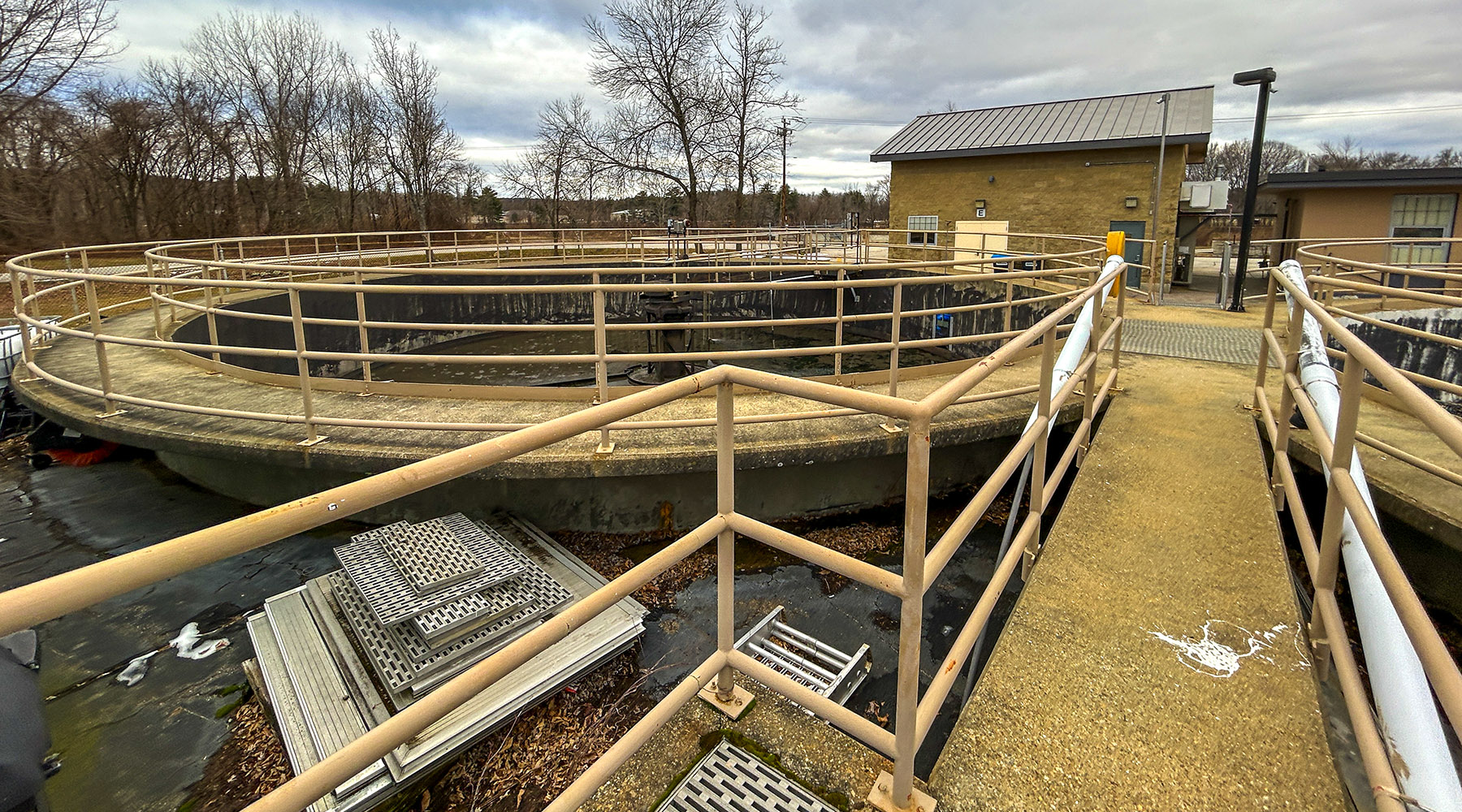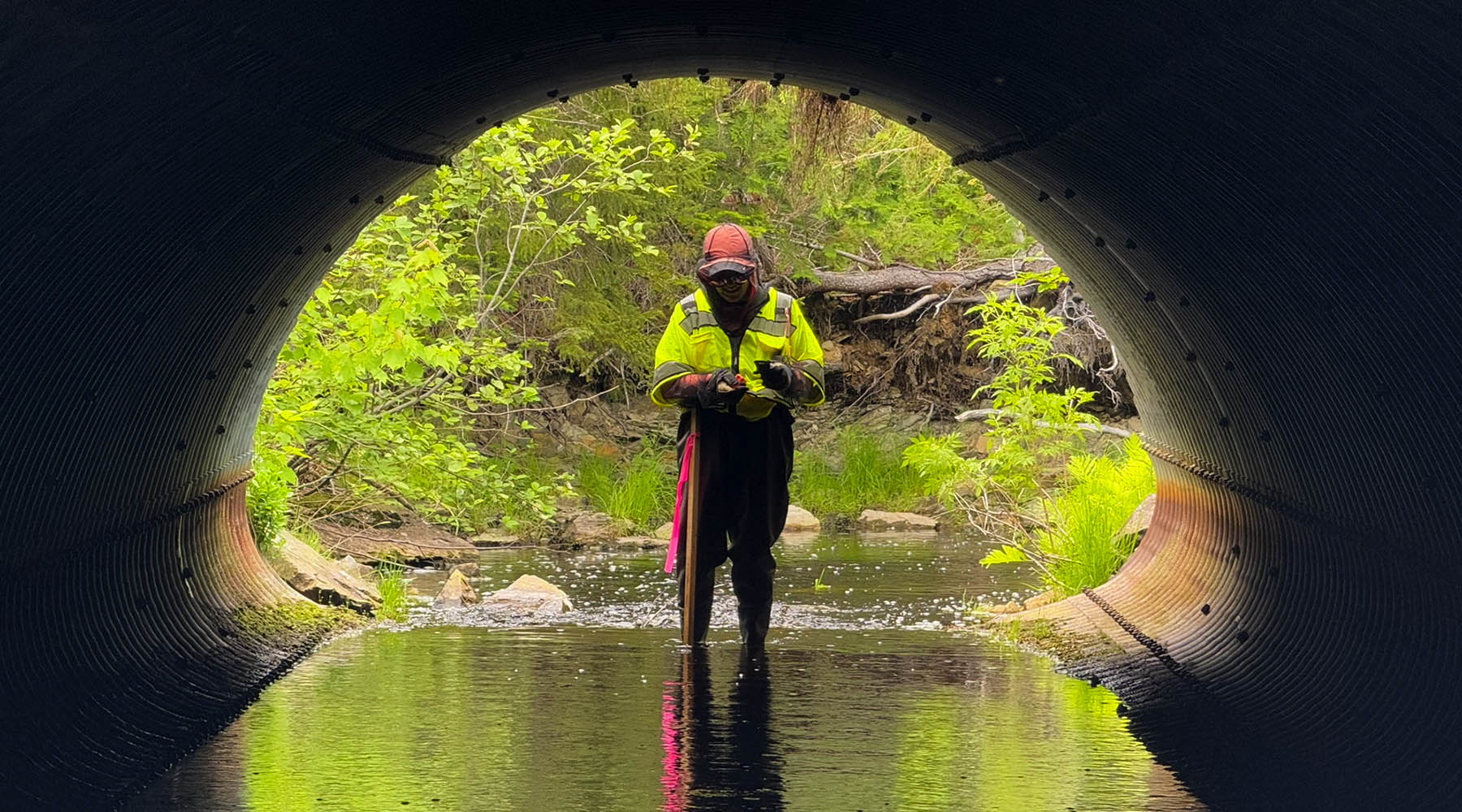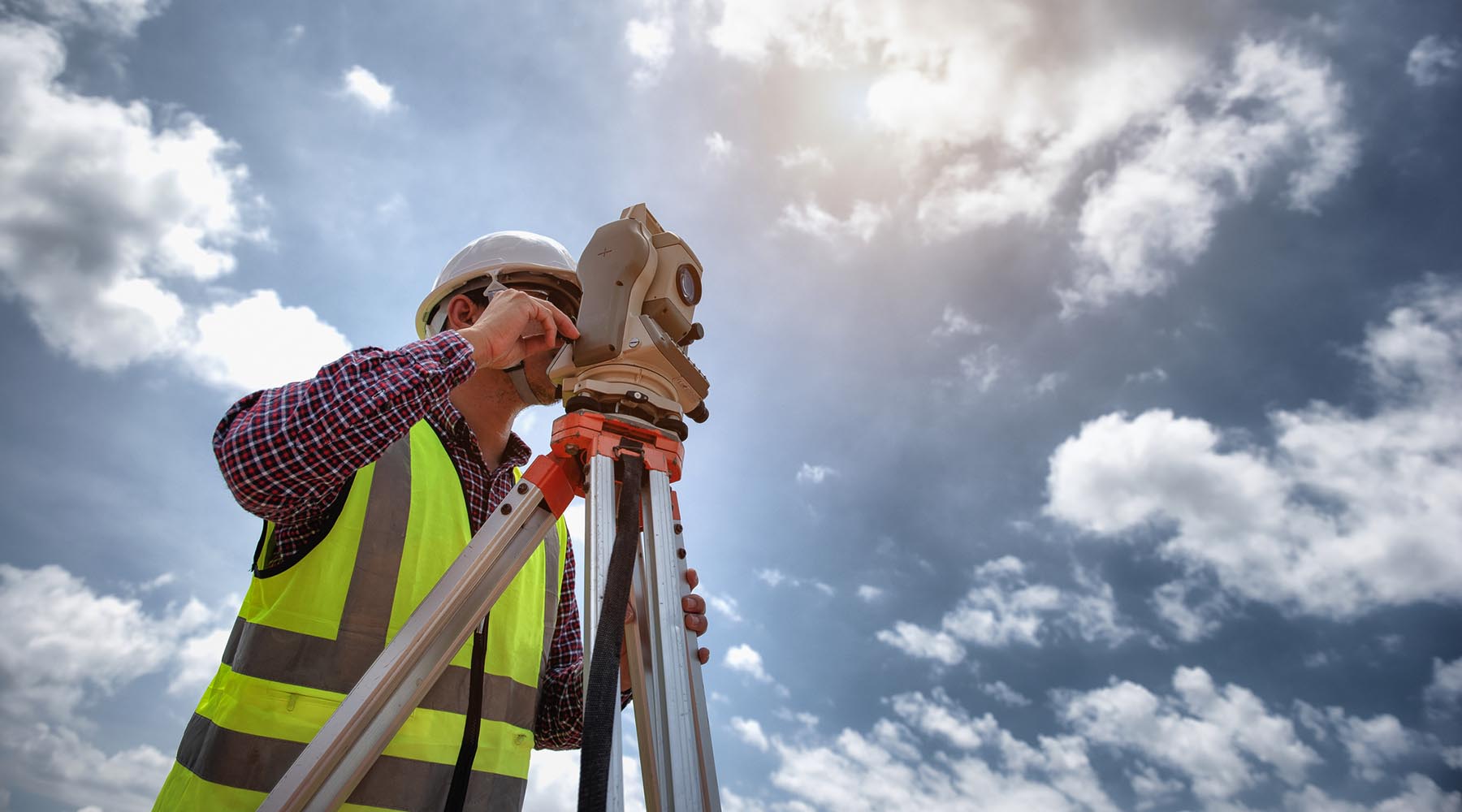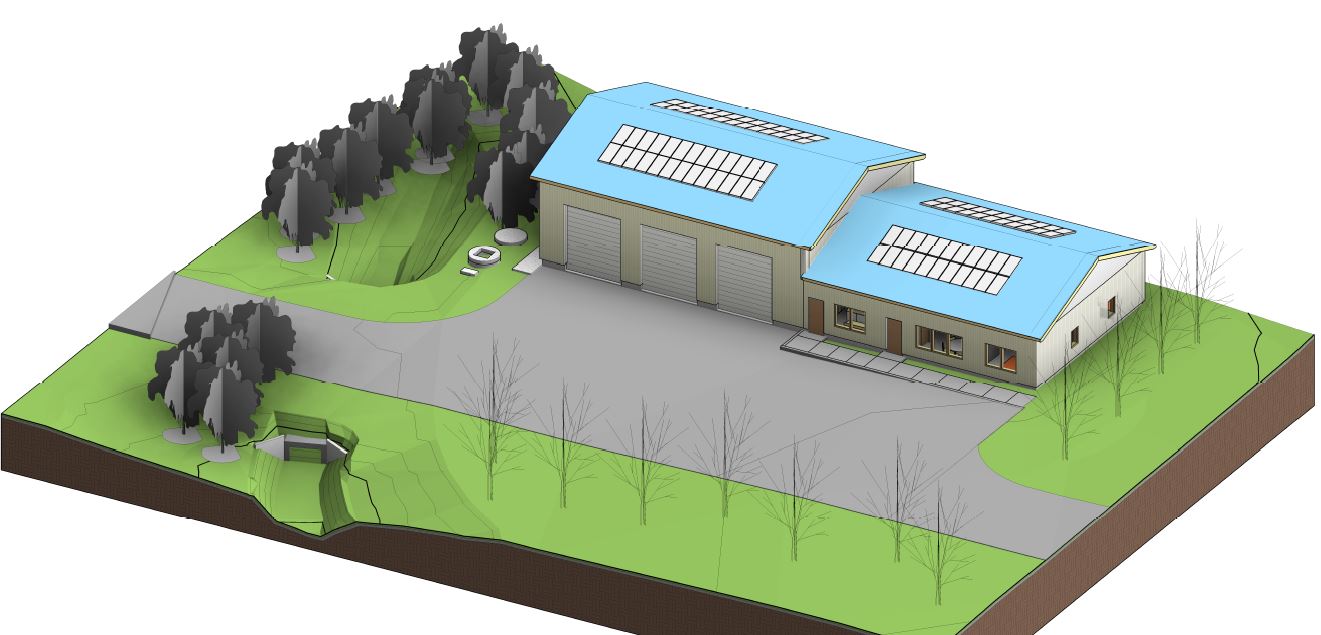At Hoyle Tanner, we pride ourselves on delivering exceptional engineering solutions, like the recent Route 111 Bridges in Nashua. Stakeholders (Nashua, Hudson and NHDOT) sought to rehabilitate the East Bound and West Bound bridges on Route 111 over the Merrimack River between Nashua and Hudson. The goal was to enhance the structural integrity of the bridges while keeping them open to vehicles and pedestrians, and is a testament to our commitment to solutions based on client needs.
Client’s Requirements
The primary objective was to rehabilitate the bridges without detouring traffic. This meant that the Route 111 bridges had to remain open to the public throughout the construction period. The project involved replacing damaged pavement, deteriorated concrete, and existing damaged expansion joints, supplementing or replacing rusted and corroded reinforcing steel, adding galvanic anodes to prevent future corrosion, improving pedestrian routes across the bridges, and fixing any damaged appurtenances such as the bridge rails and light poles.
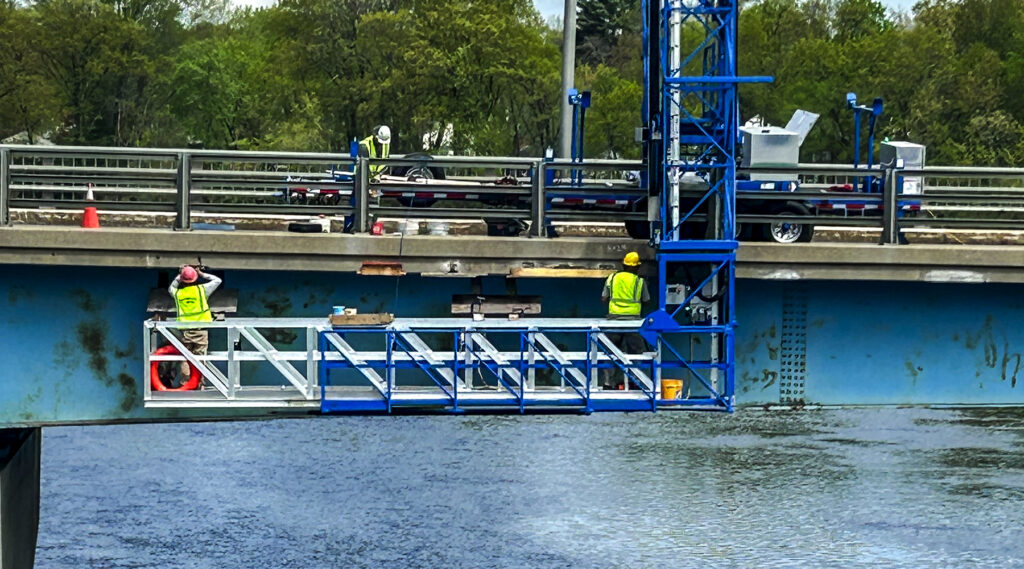
Challenges Faced
As with any large-scale infrastructure project, we encountered several challenges along the way. Unexpected site conditions were a significant hurdle. We discovered light poles that were damaged further than anticipated, damaged and improperly installed bridge rails, and excessive deterioration, corrosion, and damage to concrete, rebar, and the conduit in the sidewalk.
Another challenge was maintaining safe pedestrian routes and ensuring ADA compliance while the bridges remained open to traffic. This required adjustments due to unexpected traffic speeds coming off the eastbound bridge which resulted in safe pedestrian traffic needing to be maintained through the construction site. The solution was temporary wooden bridges to allow pedestrians to safely cross the bridge while the expansion joints were being replaced. Pedestrian ramps were also made to direct pedestrians off the sidewalk and onto a temporary pedestrian lane in the construction zone while the deteriorated concrete sidewalk was under construction.
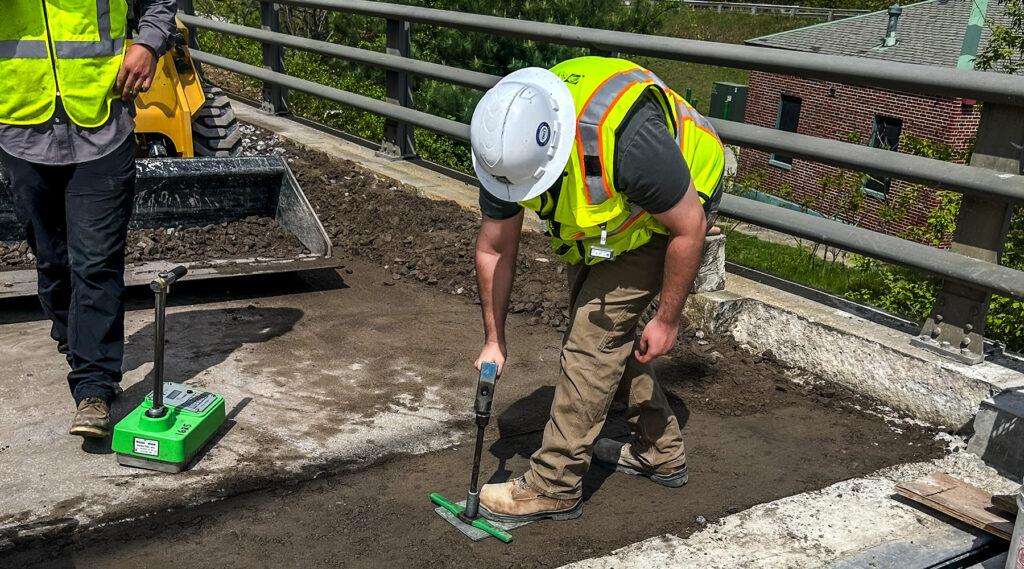
Overcoming Challenges
Our team – including Dave Langlais (Project Manager), Jeff Burnap and myself (Resident Project Representatives), and Karen Allen (coordinating LPA compliance) – worked tirelessly to address these challenges. We coordinated change orders to adjust and add contract items as needed. When unexpected site conditions arose, we ensured that the contractor was adequately compensated for the additional work performed.
We held bi-weekly construction meetings to maintain strong communication among all stakeholders, including the design engineer (Dubois & King) and contractor (Beck & Bellucci). This communication and teamwork has been crucial to the project’s success and making sure all involved parties approved of any changes from the original design plans.
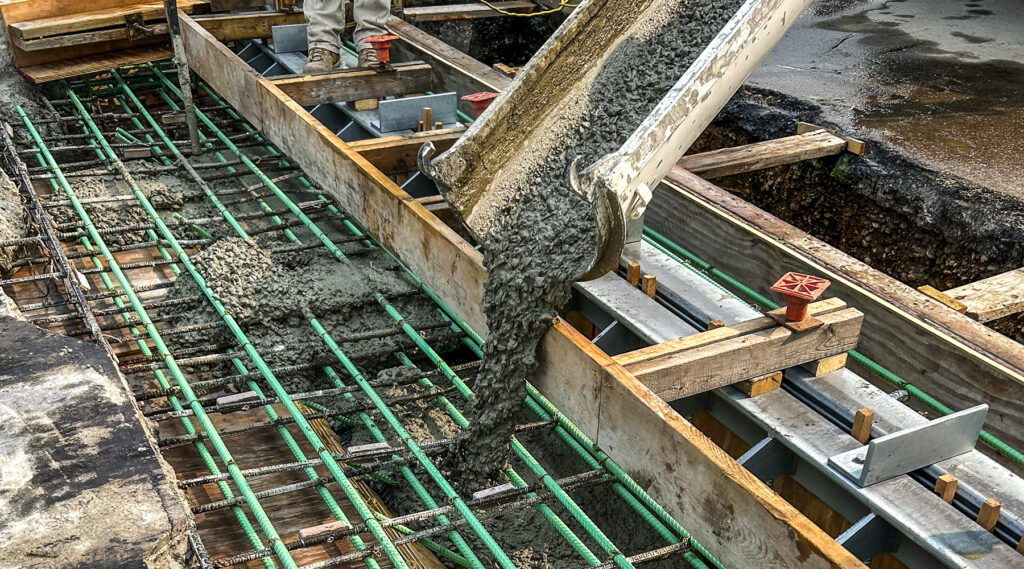
Conclusion
The rehabilitation of the Route 111 bridges was a challenging yet rewarding project. By working closely with Nashua and other stakeholders, we successfully enhanced the structural integrity of the bridges while keeping them open to the public. This project is an example of Hoyle Tanner’s dedication to delivering high-quality engineering solutions. If you have a similar project in mind, don’t hesitate to reach out to us. We’re here to help you achieve your infrastructure goals.


